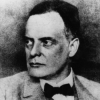Paul Klee

Paul Klee
Paul Kleewas a Swiss-German artist. His highly individual style was influenced by movements in art that included Expressionism, Cubism, and Surrealism. Klee was a natural draftsman who experimented with and eventually deeply explored color theory, writing about it extensively; his lectures Writings on Form and Design Theory, published in English as the Paul Klee Notebooks, are held to be as important for modern art as Leonardo da Vinci's A Treatise on Painting for the Renaissance. He and his colleague, Russian...
NationalitySwiss
ProfessionPainter
Date of Birth18 December 1879
CityMunchenbuchsee, Switzerland
CountrySwitzerland